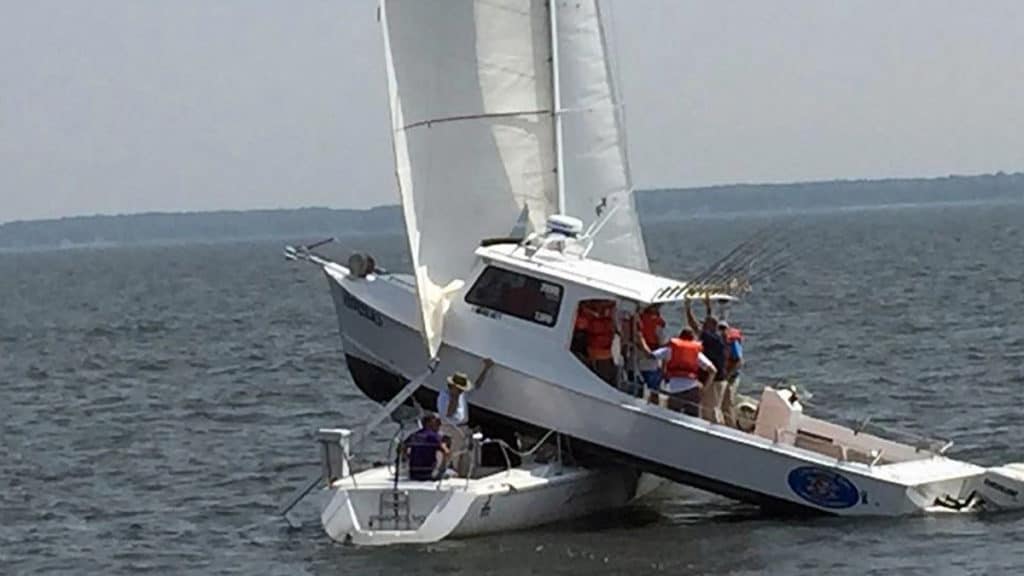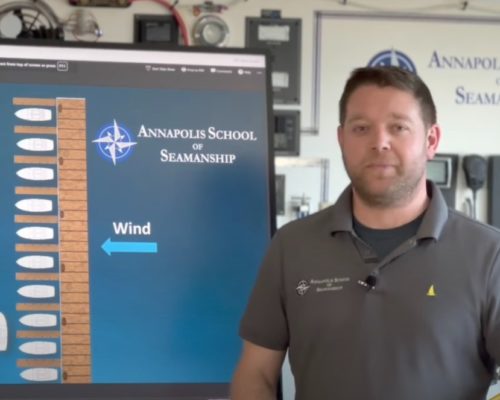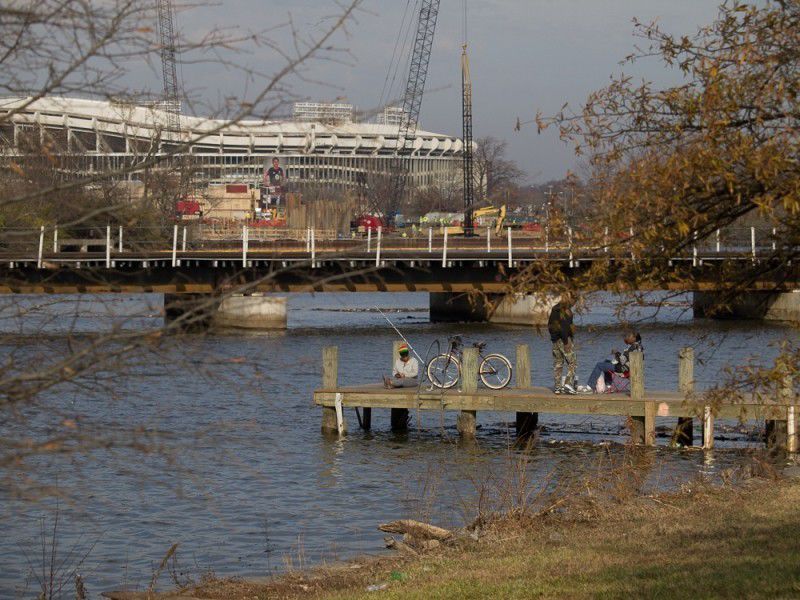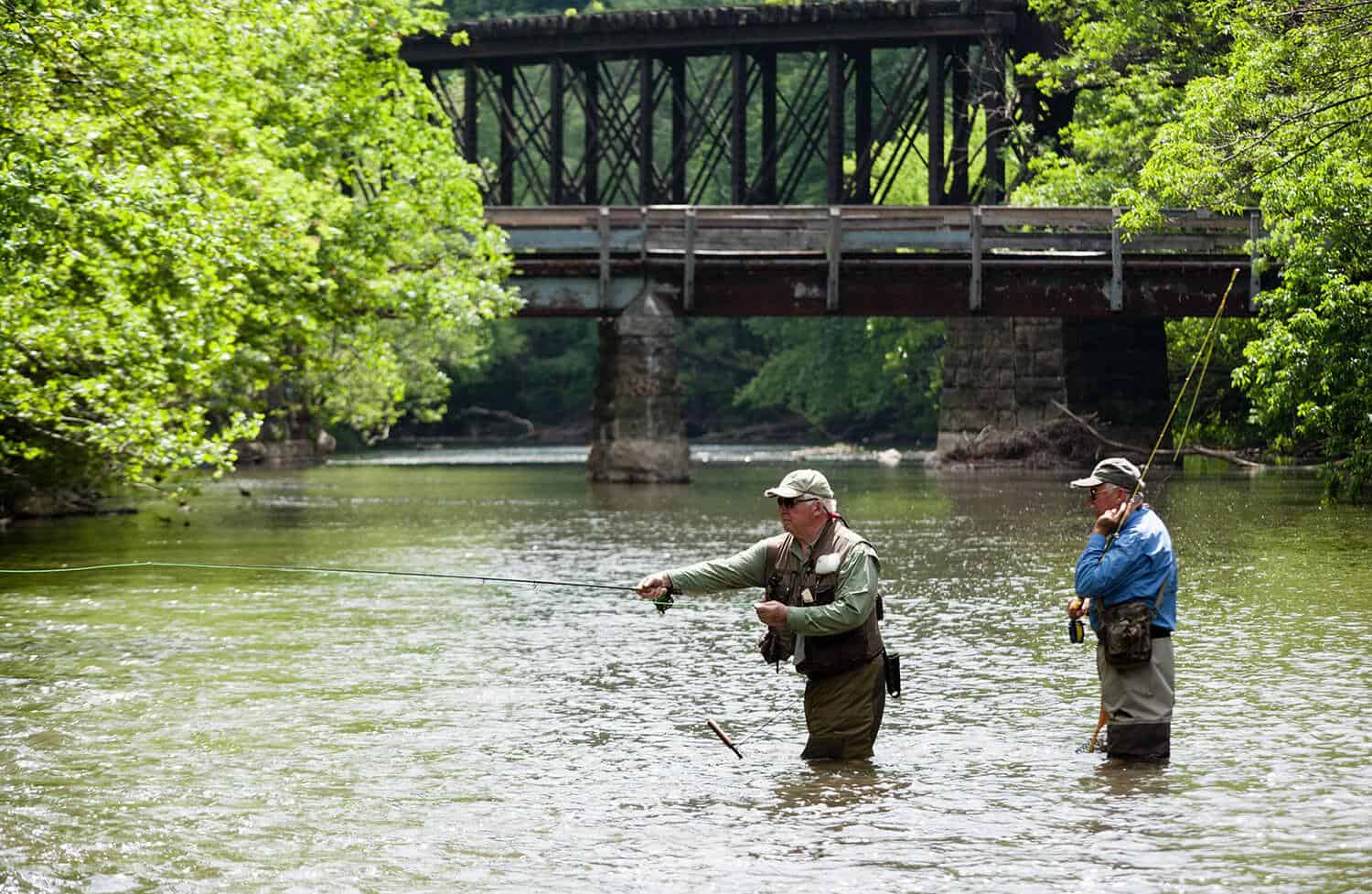We all remember the photo from August 2018: a charter fishing boat just sitting atop a sailboat as if placed there by a giant toddler. Only this was no bubble bath. It was the Chesapeake Bay off Tolly Point near Annapolis and the photo was very real. A firefighter snapped it from the deck of the Anne Arundel County fireboat on what may have been the strangest call of his career: a 34-foot deadrise boat, Hunter teetering on top of Levitation, a 35-foot J/105 sailboat.
As soon as folks realized nobody had been seriously hurt, they started sharing like crazy on social media. The photo went viral, sparking worldwide news coverage and heated debates on online sailing and powerboating forums.
Nobody could say for sure how it happened, but that didn’t stop people from speculating. Even when the only information about the accident was that picture, everybody seemed to have an opinion about who was to blame—and those opinions varied a great deal depending on whether they came from sailors or powerboaters.
John Martino says all that finger pointing misses the point. The founder of the Annapolis School of Seamanship (Chesapeake Bay Media’s sister company) was teaching a course on the Rules of the Road when the accident happened a few minutes before noon on August 17, 2018. Before the class was over, a half-dozen people had texted the image to him.
“When I first saw that picture, my first thought is that neither captain saw the other boat,” Martino says. If either captain had seen the other boat and followed the Rules of the Road the accident should never have happened, Martino said when I asked him to analyze the accident for Lessons For Life, a safe boating campaign administered by the U.S. Coast Guard. Martino is a master mariner with deep experience in both power and sail, and he knows the Chesapeake as well as anyone. Still, the more we talked about the accident, the less sense it made.
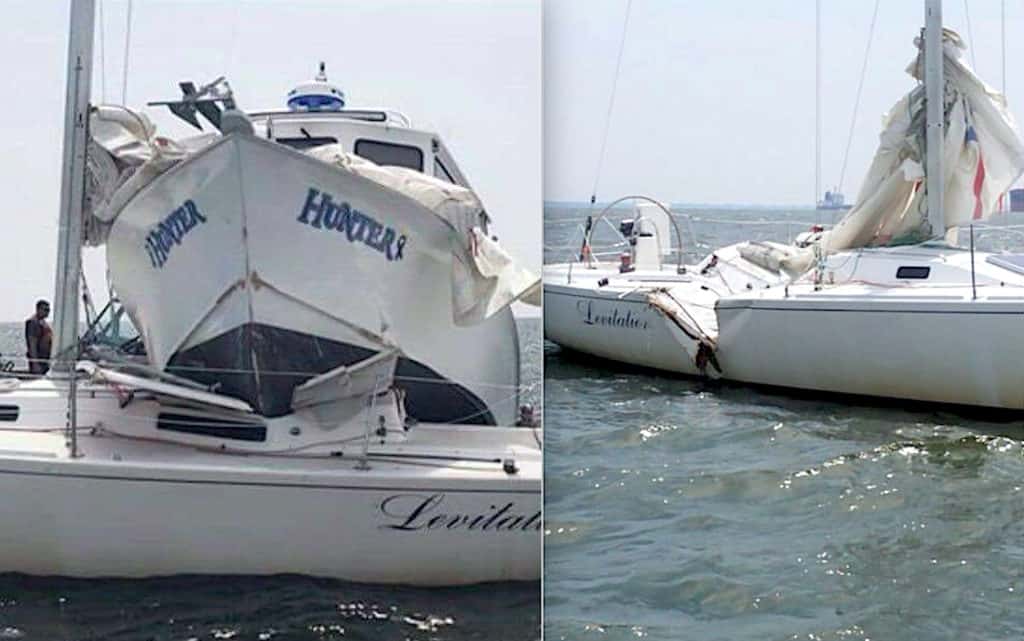
Seven people were on the charter boat. How could all of them, including a licensed captain, fail to see a 35-foot sailboat with a 50-foot mast, in broad daylight? And if the sailor saw the motorboat coming for several minutes, why didn’t he steer out of the way when he realized the other boater didn’t see him?
To answer those questions, Martino agreed to re-create the moments leading up to the collision, reproducing the sightlines from both boats. He obtained the Coast Guard’s accident report, which included the GPS tracks from both vessels. Then he pulled together a dream team of experienced captains to reenact the moments leading up to the collision, using a deadrise boat similar to the one involved in the accident and a J/105 sailboat identical to the one it T-boned.
Watch the video below to see how it played out, then read on:
Conditions for the reenactment were almost identical to the day of the accident: Clear and bright with light winds. Capt. Matt Benhoff, an instructor at the Annapolis School of Seamanship, was in the deadrise. John Stefancik, a lifelong boater and publisher of Chesapeake Bay Magazine, was on the sailboat with Capt. Karl Richter, also of the Annapolis School. Torrey Pocock and his Riggo Productions crew filmed from both boats and a drone. The result was some very dramatic video, and important insights into the Rules of the Road, the maritime traffic rules designed to avoid collisions at sea.
Before the reenactment, Martino and his team thought the view from one or both of the vessels would be obstructed. Deadrise boats have a tendency to squat down in the stern, and it’s sometimes difficult to see over the bow. And a sailing vessel’s sails can sometimes block the helmsman’s view. At the time of the accident, Levitation’s jib was on the starboard side—the same direction from which Hunter was approaching.
In the very first pass of the reenactment, however, it became obvious that neither captain’s view had been blocked. Stefancik could easily see around the J/105’s sails, and Benhoff’s view of the sailboat was unnervingly clear. In fact, the hardest part of the whole exercise was fighting the urge to swerve away, he says.
As the distance to the sailboat kept decreasing, its position as seen from the motorboat didn’t change. It was a textbook example of “constant bearing, decreasing range,” which is how mariners are taught to know they’re on a collision course. Just watching the reenactment video is a little uncomfortable for any experienced boater. For Benhoff, it was excruciating.
“All of my training and experience is telling me to turn,” he says. “It felt really unnatural.”
After the accident, people speculated online that the charter captain had been running on autopilot or steering from the deadrise’s aft helm. According to the Coast Guard investigation, that was not the case. He also tested clean for alcohol and drugs.
The reenactment suggests a simpler conclusion: The charter captain simply didn’t notice the sailboat in front of him. “It just screams Rule Five, which is look out,” Martino says. “It’s one sentence long, but it says a ton. It says we’re supposed to look out by sight and hearing and all available means at all times.”
If you’re looking for one root cause of the accident, that’s it. But if you want to understand how both captains failed to avoid the collision, you need to go a little deeper.
Remember the sailor claiming he had “right of way?” That’s not quite accurate. In this scenario, as in most other crossing situations involving a vessel under power and another under sail, the sailboat is the stand on vessel. Its job is to maintain course and speed, or “stand on” as Popeye would say. That’s not a right, though. It’s a responsibility. And as Martino explains, that responsibility evolves with the situation.
The motorboat is the give way vessel. Its job is to avoid the sailboat, by making an obvious course change that makes its intentions clear. That’s important, because if the powerboat doesn’t take action to avoid a collision, the sailboat’s options and responsibilities change.
“The rule is very interesting, because when it becomes apparent that the give way vessel is not taking appropriate action, the stand on vessel may take action to avoid a collision. You’re released from your obligation to maintain course and speed,” Martino says. Based on the reenactment, this would have been the best time for Levitation to alter course and avoid the motorboat.
“In the final stage the stand on vessel is directed that it shall take action when action by the give way vessel alone is not going to be sufficient to avoid a collision,” Martino says. By that time, though, it might not be so easy to get out of the way. Stefancik, who was in the J/105 during the reenactment, estimates he could easily have tacked or jibed out of the motorboat’s path until about 20 seconds before impact. After that, he was out of good options.
Re-enacting one of the Chesapeake Bay’s unlikeliest collisions led to a few surprises, but mostly it confirms what we already know about safe boating. Keep a good lookout. Know and follow the Rules of the Road. But more simply, don’t forget about courtesy and common sense.
“You just have to keep your head on a swivel, and then make decisions and take action to avoid a collision,” Martino says. “In fact, that’s even one of the rules.”
-Jeff Moag

